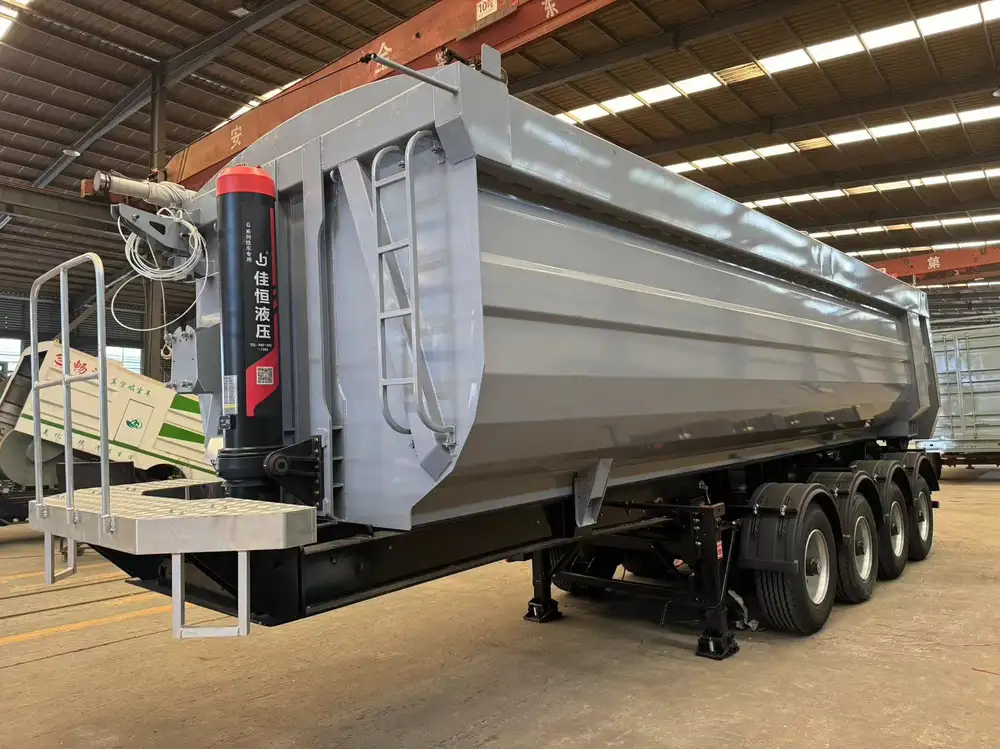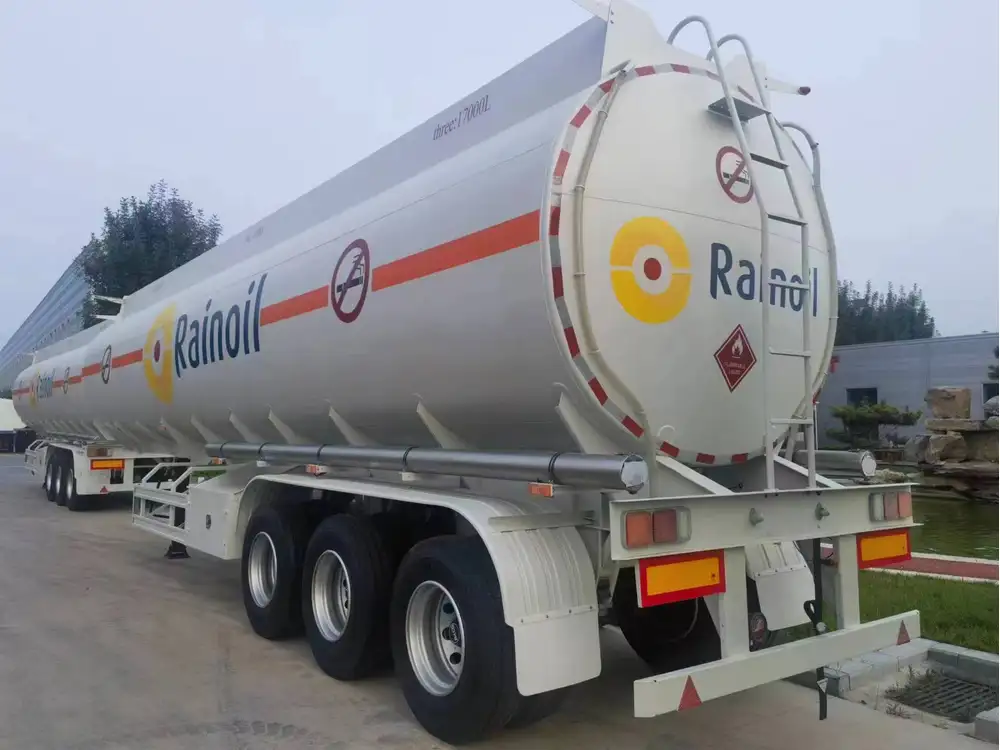When embarking on the adventure of transporting a camper via a flatbed trailer, careful planning and execution are paramount. This guide aims to equip you with in-depth knowledge and practical steps to securely place a camper on a flatbed trailer, ensuring both safety and efficiency. Let’s delve into the intricate details of this process.
Understanding Your Trailer and Camper
Before attempting to load a camper onto a flatbed trailer, it’s crucial to understand both the camper specifications and trailer capabilities.
| Attribute | Camper | Flatbed Trailer |
|---|---|---|
| Length | Varies (typically 10-30 feet) | Standard sizes (e.g., 20, 24, 30 feet) |
| Weight | Up to 3,500 lbs (or more for larger models) | Capacity varies (up to 10,000 lbs+) |
| Width | Generally around 6-8 feet | Usually 8.5 feet wide (if legal) |
| Loading Height | Typically 2.5-3.5 feet high | Varies, but often lower than trucks |
Key Considerations
Weight Capacity: Always check the weight ratings of your flatbed trailer. Ensure the combined weight of the camper and any additional gear does not exceed the trailer’s limit.
Camper Dimensions: Measure the camper’s length, width, and height accurately. This will help determine if your trailer can accommodate it safely without overhang.
Load Distribution: Proper weight distribution is crucial for safe transport. Ideally, 60% of the load should be in front of the trailer axles.

Preparing for Loading
Proper preparation is essential. Inadequate preparation can lead to accidents or damaging both the camper and the trailer.
Tools You Will Need
- Loading ramps: To provide a safe incline for the camper to roll onto the trailer.
- Tie-down straps: Heavy-duty straps to secure your camper.
- Wheel chocks: To prevent the camper from rolling off the trailer during loading and unloading.
- A level: To ensure proper balancing.
Safety Precautions
- Ensure the flatbed trailer is parked on a level surface.
- Engage the trailer’s parking brake before loading.
- Wear safety gear – gloves and sturdy shoes.
- Have a spotter to assist in the loading process, providing guidance and ensuring safety.

Step-by-Step Process to Load Your Camper
1. Position the Flatbed Trailer
Park the Trailer: Position your flatbed trailer in a flat, firm area where you will load the camper.
Align with the Camper: The trailer should be parallel to the camper. Ensure sufficient space for the ramps.
2. Set Up Loading Ramps
Attach Loading Ramps: Securely attach ramps to the flatbed trailer. Ensure they are stable, making sure they can handle the weight of the camper.
Check Ramp Stability: Before loading the camper, ensure the ramps are not slippery and are firmly held in place.

3. Understand Weight Distribution
Inspect Weights: Calculate the weight of the camper to understand how it will affect the trailer’s balance.
Center the Load: Aim to load the camper so that its weight is balanced, with a little more weight toward the front.
4. Load the Camper
Drive the Camper: If the camper is drivable, carefully drive it up the ramps.
Spotting: If loading manually, have someone guide you to ensure you are entering the trailer properly at a straight angle to avoid slipping off the ramps.
Slow and Steady: Whether driving or using a winch, proceed slowly and methodically, ensuring you maintain control over the camper.
5. Secure the Camper
Position on Trailer: Once the camper is fully on the trailer, shift it slightly forward or backward for optimal weight distribution.
Use Tie-Down Straps: Secure the camper to the trailer using heavy-duty tie-down straps. Attach them to the designated tie-down points on the trailer.
- Front Tie-Down: Loop the straps over the camper and attach them back to the trailer.
- Side and Rear Tie-Downs: Place additional straps on the sides and rear to prevent lateral movement.
Check Stability: Tug gently on the camper to ensure all straps are tight and secure. No movements should be felt.

6. Final Check
Inspect All Straps and Connections: Before hitting the road, double-check all straps and connections for tightness and security.
Verify Trailer Load: Inspect the entire load setup to ensure everything looks stable. No parts should be hanging off the edges.
Transporting the Camper: Best Practices
Road Safety Tips
Speed Limits: Adhere to speed regulations; never exceed the limit while towing a camper on a flatbed trailer.
Braking Distance: Increase your following distance, as loaded trailers require longer stopping distances.
Turn Carefully: Make broader turns to accommodate the length of the trailer and prevent swaying.

Regular Checks During Transport
Periodic Stops: Make stops during long trips to check the camper’s stability and make adjustments if necessary.
Check Tire Pressure: Before starting, and at intervals during transport, check the tire pressure of both the vehicle and the trailer.
Unloading the Camper: A Detailed Approach
Once you’ve reached your destination, unloading the camper can be just as critical as loading it.
1. Preparation for Unloading
- Ensure the area is clear of obstacles.
- Settle the trailer on a level surface.

2. Remove Tie-Down Straps
- Carefully undo all straps securing the camper and set them aside.
- Take care not to let the straps fall under the trailer wheels.
3. Position the Ramps
- Reattach loading ramps, securely ensuring they’re positioned correctly for easy unloading.
4. Drive or Roll Off
- If the camper is drivable, slowly drive it off the trailer.
- If unloading with a winch or other means, carefully guide it down the ramps, maintaining control.

5. Final Checks
- After unloading, inspect both the camper and the trailer for any possible damages.
- Store all tools and straps securely for future use.
Conclusion
Successfully loading and unloading a camper on a flatbed trailer involves understanding dimensions, weight distribution, and safety protocols. By following these structured steps, you can ensure a safe and efficient transport of your camper. With meticulous preparation and execution, you will not only protect your assets but also enjoy the journey ahead without complications.
Armed with this comprehensive guide, we trust you’ll be better equipped to tackle this task efficiently and effectively, paving the way for many enjoyable adventures ahead.



